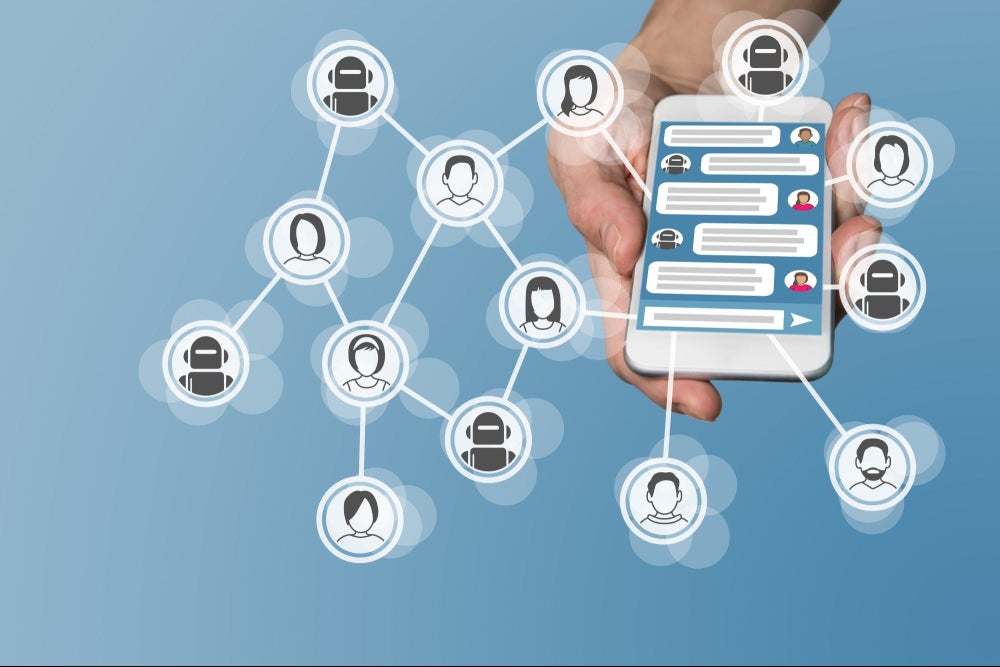March 2, 2021 6 min read
Opinions expressed by Entrepreneur contributors are their own.
The social distancing and closure of physical stores as a result of the COVID-19 pandemic has caused electronic commerce and virtual communication channels to grow exponentially in the last year.
By July 2020, it was estimated that the ecommerce in Mexico reached a development of 94%. While in the United States the percentage of online orders doubled to 40% during the quarantine, according to a survey conducted in March 2020 by the strategic advisory firm Brick Meets Click.
In this context, retailers made or are making major changes that lead them to use new technical solutions, which help them manage the transition or application of a model that harmonizes physical stores with virtual stores.
In an Entrepreneur en Español talk with Rodrigo Cerda, Deputy Manager of Business Development at Ecomsur México and Jorge Fernández-Gallardo, CEO of Ecomsur for Latin America North , the experts told us about the trends this year for retailers in ecommerce:
Omnichannel
Probably many stores were working or had in their mind the project of achieving sales through omnichannel , which is understood as a strategy that uses multiple communication channels in order to offer a comprehensive experience to their customers.
“Omnichannel as a number one point, having to attend to all channels and have a very clear strategy for marketplaces of physical stores, department stores, ecommerce for different brands and for this we have to work a lot”, explains Jorge Fernández-Gallardo.

Image: Depositphotos.com
Application of the dark store (dark stores)
What is a dark store? They are those stores that are dedicated to filling products for orders that are made only online. Retailers will use these to supply the great demand of their users, although they have already begun to carry out some tests with the merchandise of physical stores that are still closed.
In this sense, retailers began to take advantage of the stock in their stores, which they could not sell when they were open, to manage online orders. “However, a very common mistake they make is not hiring the experts and thinking that their salesmen can do it alone,” says Fernández-Gallardo.
This model is already applied by some companies in the United States, for example: Amazon opened its first permanent dark store in Brooklyn in September 2020 to fulfill online grocery orders. While Kroger had already announced its own home delivery initiative in 2018.
To do this well, retailers must make this concept “talk with store dispatch, store pickup, store return, credit note issues, connect accounting systems, etc.,” says Jorge Cerda.
Logistics changes
All consumers know how incredible it is to receive a product within hours or the day after placing an order. The ecommerce greats have set a very important guideline in this area.
Services such as Amazon Prime, in terms of elements for the home, technology, recreation, among others. And Rappi, Uber Eats, Postmates, with respect to the supermarket have accustomed customers to this immediacy, but to achieve it the logistical challenge is no less.
“For example, assume that you live in Monterrey and you want to buy something and you want it the same day, but the brand you are buying from only has one warehouse in Cuautitlán. There is no way that this can be delivered the same day without it being very expensive and without almost a person getting on a plane to deliver it to you, it is very difficult ”, explains Fernández-Gallardo.
According to the expert, retailers need to start creating strategies to achieve same-day deliveries.
“Here things like taking the product out of the (closest) physical store to deliver it to the consumer begin to gain relevance. So if you have a store in Monterrey, you can get that product that the customer bought directly from the online store and then you can replace it from the central warehouse to the store where you got it from ”, says the expert.
Likewise, he comments that it is not the only solution. “There is a lot of innovation in that sense, in the last mile, in using the stores as fulfillment centers or as a dark store , there is a lot of innovation in how we communicate with the consumer.”
Conversational commerce

Allowing companies to connect and interact instantly with their customers through various digital messaging channels has a great impact on their satisfaction and, therefore, on their purchase preference / Image: Depositphotos.com
Conversational commerce occurs when a company increases its engagement and conversation with its customers through digital channels through which it can personalize offers and content.
This feature has the objective of accompanying users during their purchase processes through communication channels that are familiar to them, such as social media messaging.
“Conversational commerce where people want to buy in a very human way and sometimes a very static ‘dot com’ store is not the simplest or easiest way. In the end, the consumer wants someone to help them buy, someone to assist them and be very conversational, ”says Fernández-Gallardo.
“For me there will be a profound transformation of retail, it is a retail 2.0 powered by technology, where physical stores do not disappear at all … There is still a while for us to get out of this but when we are no longer with the pandemic, when we are all vaccinated ecommerce is not going to disappear (to physical stores), technology will simply have enhanced and transformed the way in which people interact with brands ”, he concludes.



